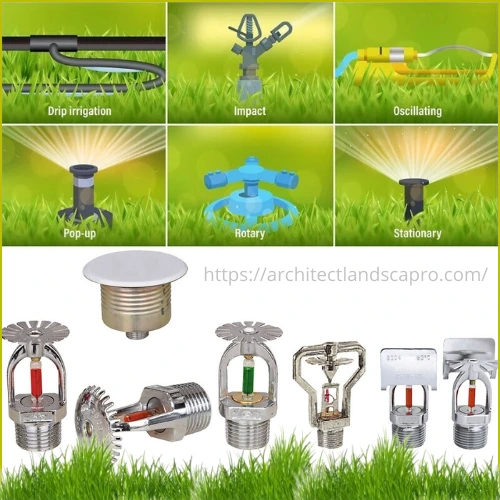If you’re looking to maintain a lush, green garden without the hassle of daily watering, installing a sprinkler system is one of the smartest choices in 2025. Today’s systems are more efficient, automated, and eco-friendly than ever, helping homeowners save time, conserve water, and promote plant health with precision.
How Does a Sprinkler System Work?
A sprinkler system distributes water evenly across your lawn or garden using a network of pipes, valves, and sprinkler heads. Most systems are controlled via a timer or smart irrigation controller that determines when, where, and how much to water.
Key Components:
- Water Source – Usually connected to the main line or a dedicated tank
- Pipes & Valves – Transport water and control flow to each zone
- Sprinkler Heads – Spray water in different patterns and ranges
- Controller – Automates watering schedule based on time or weather
Benefits of Installing a Sprinkler System
- Water Efficiency: Smart systems adjust for rainfall and soil moisture
- Time-Saving: No more manual watering or dragging hoses
- Healthier Plants: Even, deep watering improves root growth
- Customization: Zones allow specific watering for lawns, flowers, or hedges
- Property Value: Professionally installed systems can increase resale value

Types of Sprinkler Systems
- Fixed Spray Systems
Best for small lawns or flower beds; spray in a fixed pattern. - Rotor Systems
Great for large areas; heads rotate and cover wide zones. - Drip Irrigation
Delivers water directly to the plant roots with minimal waste. - Smart Sprinkler Systems
Controlled via app; adjust automatically using weather data.
Where to Use a Sprinkler System
- Lawns – Maintain uniform green coverage
- Hedges & Shrubs – Ensure deep watering without over-soaking
- Vegetable Gardens – Use drip lines for targeted watering
- Flower Beds – Set zones for delicate plants
- Public & Commercial Spaces – Automate irrigation for parks and medians
Tips for Installing a Sprinkler System
- Design zones based on sun exposure and plant type
- Install a rain sensor or smart controller to avoid overwatering
- Schedule early morning irrigation to reduce evaporation
- Flush the system periodically to prevent clogging
- Winterize in cold climates to prevent pipe damage
Top Picks: Best Sprinkler Systems for 2025
| Product | Type | Key Feature | Price Range |
|---|---|---|---|
| Rachio 3 Smart Sprinkler | Smart Controller | App-based, weather intelligence | $150–$180 |
| Orbit B-hyve XR | Smart Controller | EPA WaterSense certified, Alexa-enabled | $100–$130 |
| Rain Bird 32ETI Kit | Rotor | DIY-friendly, full lawn coverage | $90–$120 |
| DIG Drip Irrigation Kit | Drip | Easy setup for raised beds and planters | $60–$80 |
👉 Check them out on Amazon or local retailers for 2025 upgrades.
Common Mistakes to Avoid
- Watering too frequently → leads to shallow roots
- Incorrect head spacing → causes dry spots or overlaps
- Skipping maintenance → clogged nozzles and valve issues
- No rain sensor → unnecessary watering after rainfall
- Poor zoning → some plants may get too much or too little water
💬 Final Thoughts
A sprinkler system can revolutionize how you care for your garden or lawn in 2025. With smart controls, water-saving technology, and tailored setups for every space, it’s a smart investment in your landscape’s long-term health. Whether you choose a simple DIY setup or a professional installation, proper irrigation makes all the difference.
- 👉 Visit our guide on Smart Garden Tools for 2025
- 👉 Looking for outdoor lighting to pair with your irrigation? Explore our complete guide to solar-powered garden lights.
- 🌐 Learn more at the EPA WaterSense Irrigation Resources


